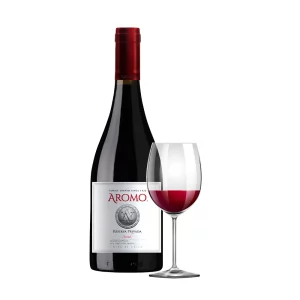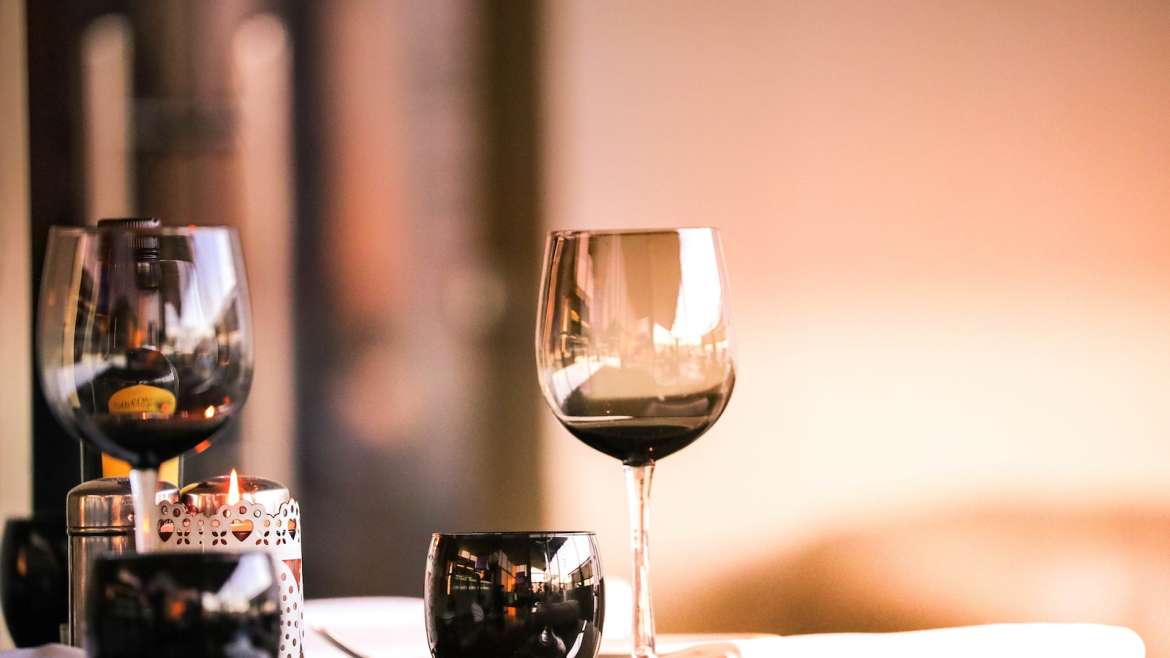There are many different kinds of red wines, which might leave wine lovers with an overwhelming number of options. Petite Sirah, as well as Syrah, are two of these well-liked choices. Despite having similar names, these wines have unique qualities that make them stand out.
In the article The Difference between Petite Sirah and Syrah, we will look at the fundamental distinctions between Petite Sirah and Syrah to help you learn about and appreciate their distinct characteristics.
1. Summary of the difference between Petite Sirah and Syrah
| Characteristics |
Petite Sirah |
Syrah |
| Origin | The southeast of France, California,… | The Rhône Valley in France, Australia, US,… |
| ABV | 13.5% – 15.5% | 14.5–15.5% |
| Grape varieties | Durif | Shiraz |
| Flavor profile | Dark chocolate, plum, blueberry, blackberry,… | Spices, smoked pork, blackberry, black cherry, and black pepper |
| Wine styles | Full-bodied | Full-bodied |
| Food pairings | Salty, fatty, meaty dish and cheese. | Meaty dish. |
The similarities between Syrah and Petite Sirah are just in their names and a few features; otherwise, they are two separate grape varietals.
- Origin: The term “Petite Sirah” is deceptive since it implies a scaled-down version of Syrah. But Petite Sirah represents a unique grape varietal with unique qualities. Petite Sirah is said to be a descendant of Syrah. It is a blend of the ancient French grape Peloursin and Syrah.
- Profile of flavors: Syrah and Petite Sirah both create robust, full-bodied red wines. They frequently have tastes of plum, blackberry, and other dark fruits. Similar overtones of spice, black pepper, and earthy might also be present in them.
- Tannins and structure: The high tannin content of both kinds contributes to their sturdy construction and long shelf life. They can thus be aged in oak barrels because of this.
Though they share some common points, Petite Sirah and Syrah are totally 2 different types of wine!
2. The differences between Petite Sirah and Syrah

-
Grape Variety
Petite Sirah: This is a grape varietal that is also referred to as Durif. It is a hybrid of Peloursin and Syrah grapes. Unlike its name, it has nothing to do with Syrah.
Syrah: In various regions of the world, the grape variety Syrah is also referred to as Shiraz. It is a grape variety with black skin that was developed in France’s Rhône Valley.
-
Growing region
Petite Sirah: Petite Sirah is largely farmed in California, notably in areas like Paso Robles, Sonoma County, and Napa Valley.
Syrah: Around the world, there are several wine locations where this grape is cultivated. The Rhône Valley, France is where it is most frequently grown, although it can also be grown in other nations including Australia, the US, and South Africa.
-
Wine styles
Petite Sirah: Wines made from the Petite Sirah grape are renowned for being powerful, dark, and full-bodied. Typically, they feature dark chocolate, plum, blueberry, and blackberry tastes. They may also be quite acidic and tannin-rich.
Syrah: Depending on the locale and winemaking technique, syrah wines can have a broad range of characteristics. They can be flavored with spices, smoked pork, blackberry, black cherry, and black pepper. Syrah wines often have a substantial body and between medium and high tannin levels.
The Syrah grapes seem to be brighter and have a more purplish-red color than the Petite Sirah grapes, which are dark, and inky purple.
Editor’s note: Additionally, Syrah has stronger berry tastes than Petite Sirah whereas Petite Sirah is frequently pepperier. This makes them great for mixing with a variety of foods, depending on your preferences.
-
Food pairings
Petite Sirah: Petite Sirah works nicely with heavy foods like roasted meats, soups, and aged cheeses because of its powerful aromas and high tannin content.
Syrah: Wines made from the syrah grape are adaptable and go well with a variety of dishes. They go nicely with charcuterie, roasted meats, game, and meals that contain herbs and spices.
In conclusion, Syrah and Petite Sirah are two distinctive grape varietals that create wines with unique taste profiles and aspects. Don’t get these two wines mixed up.
You can also like:
- Everything You Need to Know About 24 Bottle Wine Fridge Dimensions
- How Long is Chardonnay Good for? Tips and Guide
- What Is The Driest Red Wine? | A Professional Guide
3. Which should you choose: Syrah or Petite Sirah?
It depends on your preferred taste profile whether you like Petite Sirah or Syrah wines; there isn’t necessarily a superior option. Both varietals have robust taste profiles that go well with food, although they differ significantly in terms of the proportions of tannins and peppery vs. berry flavors. Whether you’re searching for a refreshing drink to sip or something strong enough for dinner gatherings, Petite Sirah and Syrah will most likely fit the bill well.
You can also consider these factors when you don’t know which wine to choose Petite Sirah or Syrah. Petite Sirah is a fantastic option if you want a wine that will mature nicely. If you want a wine that won’t be as harsh on your taste then choose Syrah.
Petite Sirah and Syrah are both wonderful choices if you want a wine with a high alcohol concentration. Petite Sirah is a great bottle of wine if you want a glass of wine with a rich, inky purple hue. Syrah is an excellent decision if you’re searching for a versatile variety that can be produced in a variety of climates across the world.
4. What is Petite Sirah?

4.1. Origin
The grape known as Petite Sirah, sometimes called Durif, has its roots in the southeast of France. The grape shines on the Central Coast, in which it is frequently mixed with Zinfandel, in Temecula Valley, and Livermore Valley, where growers like Dante Robere or Concannon create remarkable examples.
Despite its beginnings, Petite Sirah achieves its most famous heights in California. Napa Valley and Sonoma also have top-notch Petite Sirah producers such as Gehricke, Girard, and Ovid.
4.2. Tasting notes
Petite Sirah is known for its deep, dark, and rich fruit, such as plums, blackberries, and, on rare occasions, blueberries and cherries. Also detectable are sweet spice flavors like vanilla flavor, cinnamon, and clove (particularly if the wine was matured in new wood).
Especially if the wine is a little older, notes of black tea or cigar smoke are not rare. Candied violets may also appear sometimes. Although Petite Sirah has some tannins, the feel of those tannins differs according to the region, the producer, and the vintage.
4.3. ABV
Petite Sirah wines typically range in alcohol by volume (ABV) from 13.5% – 15.5%, while certain varieties may have ABVs that are higher or lower. It is crucial to remember that other elements, like pH level, tannins, and flavor profile, significantly influence a wine’s quality and flavor, in addition to ABV.
4.4. Food pairings
The taste of Petite Sirah is everything but little. Contrarily, its powerful and fruit-driven nature makes it the ideal food-paring wine for meals with strong flavors.
The wine oozes juicy when coupled properly. It improves the food it’s paired with and has earthy characteristics. Petite Sirah has a medium acidity and strong tannin content.
Due to these characteristics, Petite Sirah pairs best with meals that are salty, fatty, or have strong flavors.
Petite Syrah pairs well with barbecued meats and heavily spiced foods because of its subdued smokey, earthy character. Additionally, although it is better avoided with sugary or very spicy foods, its mellow fruit flavor balances out dishes that are severely peppered.
Additionally, it’s better to stay away from shellfish and lightly seasoned dishes because they will impart a metallic and harsh flavor to the wine.
5. What is Syrah?

5.1. Origin
The Rhône Valley in France is where Syrah is most notably cultivated and produced. Here, some of the most renowned wines from the northern section of the area are either wholly made of Syrah or are built on the grape variety as a foundation.
One of the best examples of the grape is Hermitage, along with Côte-Rôtie. In addition to Crozes-Hermitage and St. Joseph, St. Cornas and Cornas are significant producers of outstanding Syrah-based wines. Even though Grenache predominates in the Southern Rhône, Syrah remains an important ingredient.
5.2. Tasting notes
Syrah-based wines frequently have strong flavors, are full-bodied, and have somewhat high levels of tannin and acidity. Wines made from syrah grapes can have a wide range of taste characteristics depending on the climate, land, and viticulture techniques.
Violets, berries (typically dark, not red), cocoa, and black pepper are just a few aroma components that might be present. All Syrah wines have different aromas, however, cherry, coffee beans, and pepper are frequently detected.
As the wine ages in the bottle, earthy or savory flavors like leather or truffle are added to balance out the initial scents. Production methods including yeast treatment and oak aging are linked to secondary taste and fragrance components.
5.3. ABV
The location of the vineyard and the weather when the wine was harvested determine the amount of alcohol in the Syrah/Shiraz. Wet and chilly vintages, as well as cooler locales, have lower alcohol content. Alcohol concentrations will rise in warmer climates or dry, hot vintages.
When cultivated in a warmer area or during a hotter vintage, as is usual in South Australia, syrah can approach 14.5–15.5% ABV, which is more common in cooler places like France or colder vintages. And because of longer hang times on the vines, riper, bolder Shiraz varieties may contain more alcohol.
5.4. Food pairings
Syrah is one of the wines that go best with food, therefore it’s a treat to pair with food. Food pairing with Syrah is easy if you are familiar with its flavor profile.
Spicy, fruity, large, and bold describe Syrah. As a result, it’s no wonder that Syrah works nicely with dishes that are both powerful and delicious. Syrah goes particularly well with game meats, and it goes well with a wide variety of cheeses as well.
6. Best tips to enjoy a glass of Petite Sirah and Syrah
Petite Sirah:
- Temperature when serving:
Petite Sirah should be served between 60 and 65 degrees Fahrenheit (15 and 18 degrees Celsius) to let its tastes and fragrances fully develop.
- Decanting:
Before serving, you should decant the bottle of wine for 30 to 60 minutes. This aids in reducing tannins and enhancing the aromas of the wine.
- Glass:
Use big, wide-bowled glasses to let the wine breathe and unleash its aromas.
- Food pairing:
Petite Sirah goes nicely with robust, fatty foods like aged cheeses, stews, and grilled meats. Its strong taste can also go well with dishes made with dark chocolate.
Syrah:
- Temperature when serving:
-
- Syrah is ideally served around 60–65°F (15–18°C), which is slightly below room temperature. Without being overly hot or cold, this enables the wine to fully express its flavors and aromas.
- Decanting:
Decanting Syrah wines is frequently beneficial, particularly when they are new or full-bodied. The wine can breathe more easily in a decanter, which helps the tastes and aromas mature. Before serving, try to decant for no less than 30 minutes.
- Glass:
To completely appreciate the scents of the wine, use a big, wide-bowled glass. This improves the wine-tasting experience by allowing the wine to breathe.
- Food pairing:
Various dishes go well with Syrah. Aged cheeses, grilled meats, and game, lamb, and poultry pair particularly well with it. The wine’s robust tastes and tannins go well with hearty, meaty foods.
7. Some of the best food pairing menus for Petite Sirah and Syrah

Petite Sirah:
- Petite Sirah and Ribeye Steak:
Since the silky flavors of blackberry, blueberry, raspberry, and plum will keep you rejuvenated while eating your steak, Petite Sirah is a great wine to pair with ribeye steak.
The combination is even more delicious if the ribeye steak is medium-rare. When you cook your steak medium rare, less fat is removed, which results in greater flavor. When preparing cuisine to pair with Petite Sirah, flavor is just what you need.
The high tannin content of Petite Sirah also makes it particularly harsh and tannic when young. When wine is paired with a fat ribeye steak, the fat in the steak will calm the tannin, making the wine taste rich, velvety, and smooth. As protein molecules are broken down by tannin, your ribeye steak will taste even better!
- Petite Sirah and Stews:
The best pairing for a full-bodied bottle of Petite Sirah is a hearty stew of beef or venison stew with succulent bits of flesh, a tangy sauce, and earthy veggies like carrots, onions, and potatoes. Because Petite Sirah is such a robust red wine, it requires a meal packed with protein and fat to counterbalance its chewy richness.
In contrast to the robust flavors of your stew, the inky flavors of Petite Sirah’s black cherries, and plums offer a welcome change. While this is going on, the wine’s overtones of licorice, blood, dark chocolate, tar, and black pepper perfectly complement the stew’s assortment of flavors.
Syrah:
- Syrah and Grilled Meat:
Red meat, especially barbecued meat, pairs nicely with Syrah. With a glass of Syrah or Shiraz, grilled lamb, steak, ribs, brisket, and different barbecued meats will taste even better. The distinctive flavors of the grape—tobacco, black pepper, and sweet fruit—go incredibly well with the smoky flavors of the grill.
Try a Syrah in France or another region with a chilly climate for more balanced meat dishes. The lamb will go extremely well with the earthy and mint tastes.
Pick a powerful Shiraz to pair with hearty BBQ foods with strong flavors like barbecue pork or ribs. The wine’s strength will be sufficient to combat the hefty fare.
- Vegetarian dishes and Syrah:
Because vegetarian cuisine is frequently light, it might be challenging to combine it with red wine. But there are many exceptions to the norm.
Hearty vegetarian meals made with beans and lentils go well with a bottle of Syrah. Syrah goes great with foods that have an earthy flavor, like mushrooms. Aubergine, peppers, and mushrooms are just a few of the grilled veggies that go great with Syrah.
8. FAQs
Q: Why is Petite Sirah spelled differently from Syrah?
Syrah along with Petite Sirah are distinct wines because they come from separate grape varietals. As is well known, Syrah is a mix of Dureza and Mondeuse Blanche. Syrah and Peloursin, a rare French cultivar from the Rhone-Alpes area, were crossed to create Petite Syrah.
Q: What makes it known as Petite Sirah?
Syrah and Peloursin vine cuttings that Durif had crossed to create a new kind of wine. Due to the tiny fruit of this grape, it acquired the name “petit sirah.” The grape also goes by the moniker durif, which honors the scientist who developed it.
Q: Is Petite Sirah sweet or dry?
By fusing Syrah and Peloursin, the Durif grape was developed to produce the dry red wine known as Petite Sirah. The thick-skinned, tightly-clustered grape that resulted was praised for producing wines with strong tannins and intense taste.
Q: How spicy is Petite Sirah?
Petite Sirah pairs nicely with curries and other hearty, meaty foods because of its deep, rich tastes and scents of blueberry, chocolate, pepper, and spice. It also has strong tannins and acidity. It’s a really special grape, but don’t mistake it for Syrah!
Q: Does Syrah pair well with pasta?
Yes. Pasta meals made with marinara sauce have a strong acidity, thus wines with greater acidity levels should be paired with them. The flavor will be dull if not.
Q: When should Petite Sirah be consumed?
In the winter, the depth and richness of taste found in these bottles make them pleasant and comforting on a chilly, night. Petite Sirah and mixes that contain it tend to match nicely with BBQ in the summer.
9. Conclusion
In conclusion, even though Syrah and Petite Sirah have the same name and place of origin, they are two different red wine varieties with distinct features. Understanding the differences between the two wines allows us to take advantage of the unique details and complexities that each one offers.
Consequently, whether you favor the Petite Sirah’s strength or the Syrah’s refinement, reading The difference between Petite Sirah and Syrah and learning more about these wines will surely improve your wine experience and give you a greater understanding of the global field of red wines.

In 2014, Leo Colon began working with Big Cottonwood Winery. Over the years he has remained part of this prestigious winery’s team and is also a contributor to other notable wine publications. As an ardent advocate for knowledge, Leo continues his vinous education to this day.

